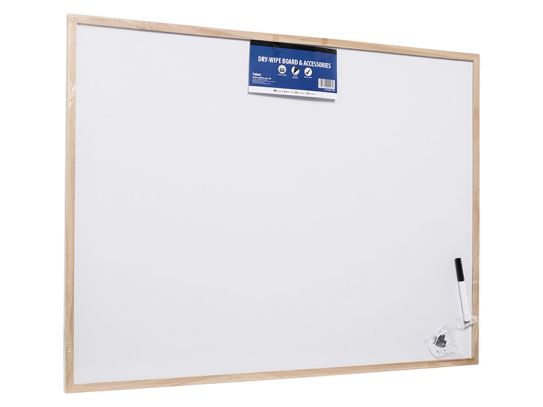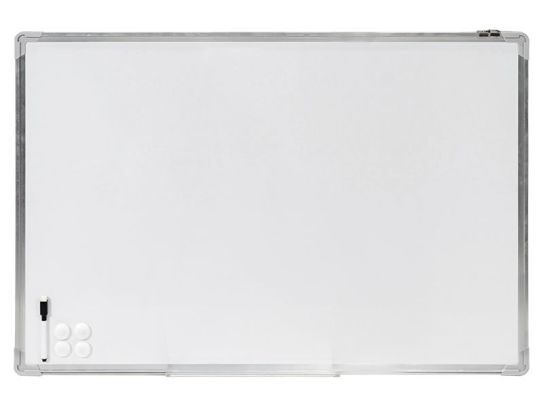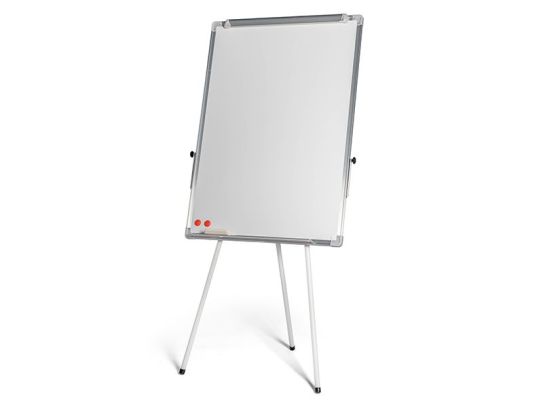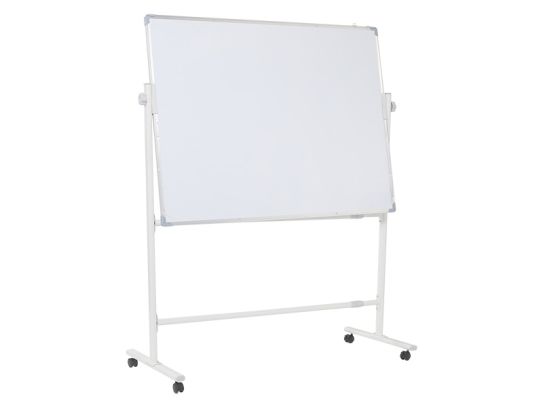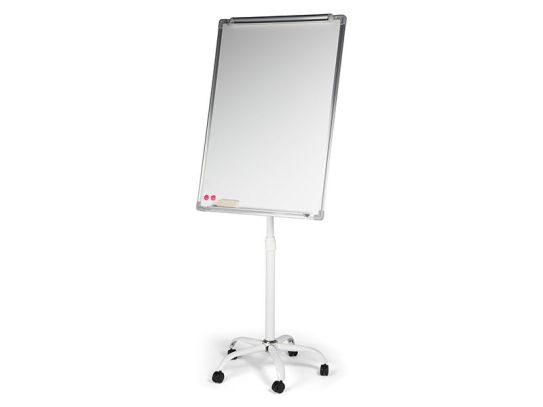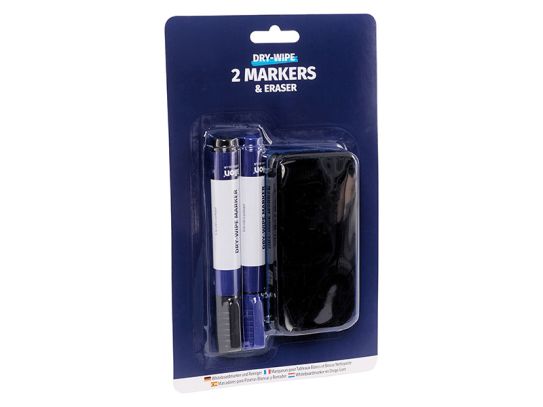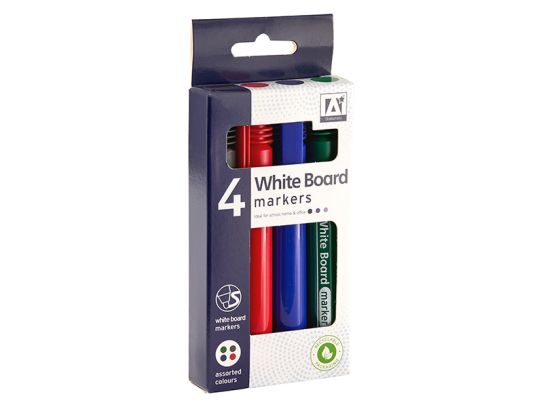Whiteboards
Write, Erase, Repeat – With Our Whiteboards, The Possibilities Are Endless
Introducing our brand new range of whiteboards – perfect for any office, classroom, or home workspace. These sleek and stylish boards are the perfect addition to any space, and will help you stay organised and on top of your tasks.
With their smooth writing surface and easy-to-clean design, our whiteboards are perfect for jotting down notes, brainstorming ideas, or creating presentations. Plus, their versatile design means they can be mounted on a wall or used as a standing board on any flat surface.
Whether you're a teacher looking to engage your students, a business owner looking to increase productivity, or simply someone who wants to stay organised and on track, our whiteboards are the perfect solution.
What Are Whiteboards?
A whiteboard is a type of dry-erase board that is often used in classrooms, offices, and other settings for writing and drawing. It typically has a smooth, glossy surface that is easy to clean and that can be written on with dry-erase markers. Whiteboards are often used as a tool for brainstorming, presenting ideas, and organising information. They are often mounted on walls or used as standing boards on a flat surface.
What Are Some Common Uses For Whiteboards?
Whiteboards are often used for a variety of purposes, including:
- Brainstorming and idea generation in meetings or workshops
- Presenting and organising information in classrooms, offices, and other settings
- Creating diagrams, charts, and other visual aids
- Collaborative problem-solving and decision-making in teams
- Outlining plans, goals, and objectives
- Keeping track of tasks, schedules, and deadlines
Because whiteboards are easy to write on, erase, and clean, they are a versatile tool that can be used in many different settings. They are commonly found in classrooms, offices, conference rooms, and other spaces where people need to write, draw, or present information.
What Are The Different Types Of Whiteboards?
There are several different types of whiteboards that are designed for different purposes and settings. Some common types of whiteboards include:
- Standard whiteboards: These are the most common type of whiteboard and are made of a glossy, smooth surface that can be written on with dry-erase markers. Standard whiteboards are often mounted on walls or used as standing boards on a flat surface.
- Magnetic whiteboards: These whiteboards have a magnetic surface that allows users to attach notes, papers, and other materials using magnets. This makes them useful for organising and displaying information in a more flexible and interactive way.
- Glass whiteboards: Glass whiteboards are made of a sheet of tempered glass and are often used in modern office settings. They are known for their sleek, contemporary appearance and their durability.
- Portable whiteboards: Portable whiteboards are designed to be lightweight and easy to move, making them ideal for use in settings where flexibility is important. They are often used in classrooms, training sessions, and other settings where people need to be able to write and draw on a board that can be easily moved around.
- Whiteboard walls: Whiteboard walls are large, wall-sized whiteboards that are often used in offices and other settings for brainstorming and idea generation. These boards are typically made of a series of smaller whiteboard panels that can be arranged in different configurations to create a large writing surface.
There are also many other types of specialised whiteboards that are designed for specific purposes, such as electronic whiteboards that can be connected to computers and other devices.
What Are The Key Features To Consider When Choosing Whiteboards?
When choosing whiteboards, there are several key features to consider, including:
- Size: Whiteboards come in a range of sizes, from small boards that are suitable for personal use to large wall-sized boards that are designed for group collaboration. Consider the size of the space where the whiteboard will be used, as well as the number of people who will be using it, to determine the right size for your needs.
- Material: Whiteboards are typically made of either melamine, porcelain, or glass. Melamine boards are the most common and are generally the most affordable, but they are not as durable as porcelain or glass boards. Porcelain and glass boards are more expensive, but they are also more durable and have a higher-quality writing surface.
- Magnetic or non-magnetic: Some whiteboards have a magnetic surface that allows users to attach notes and other materials using magnets. If you plan to use your whiteboard for organising or displaying information, a magnetic board may be a good choice. However, if you only plan to use dry-erase markers, a non-magnetic board may be more suitable.
- Mounting options: Whiteboards can be mounted on walls or used as standing boards on a flat surface. Consider how you plan to use your whiteboard and where it will be located when choosing a mounting option. Wall-mounted boards are often more permanent and may require professional installation, while standing boards are more portable and can be easily moved.
- Additional features: Some whiteboards may have additional features, such as built-in trays for storing markers and erasers, or electronic connectivity that allows them to be connected to computers and other devices. Consider whether you need any of these additional features when choosing a whiteboard.
How Do I Clean And Maintain My Whiteboard?
To clean and maintain your whiteboard, follow these steps:
- Wipe the whiteboard with a soft, dry cloth to remove any dust or debris.
- If there are any marks or stains on the whiteboard, use a whiteboard eraser or a soft cloth dampened with water or a mild cleaner to gently rub the marks away. Be sure to use a gentle, circular motion to avoid damaging the surface of the board.
- Dry the whiteboard thoroughly with a clean, dry cloth to prevent streaks or water marks.
- Store your whiteboard markers and eraser in a dry, cool place to extend their lifespan and prevent them from drying out.
- If your whiteboard has a magnetic surface, use a soft, dry cloth to clean the surface regularly to remove any dirt or debris that may have accumulated on the magnets.
- To maintain your whiteboard and keep it in good condition, avoid using harsh chemicals, abrasive cleaners, or sharp objects on the board, as these can damage the surface or leave permanent marks. Also, avoid exposing the board to extreme temperatures or direct sunlight, as these can also cause damage. Regularly cleaning and maintaining your whiteboard will help it to last longer and perform better.
Are There Any UK Or European Industry Standards Or Regulations That Apply To Whiteboards?
Whiteboards are considered office equipment and are subject to the same health and safety regulations as other office equipment in the UK and Europe. These regulations include the Health and Safety at Work Act, the Management of Health and Safety at Work Regulations, and the Provision and Use of Work Equipment Regulations.
These regulations require employers to ensure that office equipment, including whiteboards, is safe for use and is properly maintained and inspected. Employers must also provide adequate training to employees on how to use whiteboards safely and properly, and must take steps to prevent accidents or injuries related to the use of whiteboards.
Additionally, whiteboards must be manufactured to meet certain quality and performance standards in order to be sold in the UK and Europe. These standards include the EN 60335-2-96 standard, which covers the safety of office equipment, and the EN 12622 standard, which covers the safety of dry-erase boards. Whiteboards that meet these standards are typically marked with the CE (Conformité Européene) symbol, which indicates that the product complies with European Union health, safety, and environmental protection standards.
